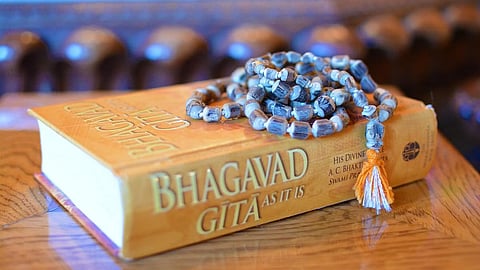
- Home
- Live Blog
- Breaking News
- Top Headlines
- Cities
- NE News
- Sentinel Media
- Sports
- Education
- Jobs

GUWAHATI: In a proud moment for India, the Shrimad Bhagavad Gita and Bharat Muni’s Natyashastra have been inscribed in UNESCO’s prestigious Memory of the World Register — an initiative aimed at preserving documents of exceptional historical and cultural value.
Commemorating the feat, Prime Minister Narendra Modi tweeted, "A proud moment for every Indian across the world! The inclusion of the Gita and Natyashastra in UNESCO’s Memory of the World Register is a global recognition of our timeless wisdom and rich culture. The Gita and Natyashastra have nurtured civilisation, and consciousness for centuries. Their insights continue to inspire the world."
UNESCO's Memory of the World Register recognizes major historical documents, texts, and manuscripts that have shaped societies across generations. The Bhagavad Gita, a spiritual discussion between Lord Krishna and Arjuna, has been a philosophical foundation for centuries. Natyashastra, written by the ancient sage Bharat Muni, is the most important work on performing arts, such as drama, dance, and music.
Embedded in the Mahabharata's Bhīṣmaparva, the Bhagavad Gita consists of 700 verses in 18 chapters. It is the deep philosophical dialogue between Krishna and Arjuna on the battlefield of Kurukshetra. Integrating concepts from Vedic, Buddhist, Jain, and Cārvāka schools of thought, the Gita has been extensively studied, admired, and translated globally for its philosophical richness.
Dated to have been codified between the 2nd century BCE and is conserved at the Bhandarkar Oriental Research Institute, Natyashastra has come to be referred to as the quintessence of Nāṭyaveda. Natyashastra is this monumental work that establishes elaborate guidelines for drama (nāṭya), performance (abhinaya), music (saṅgīta), beauty (rasa), and feelings (bhāva). One of its eternally true statements — "no meaning can blossom forth without rasa" — still impacts world literature and performing arts.